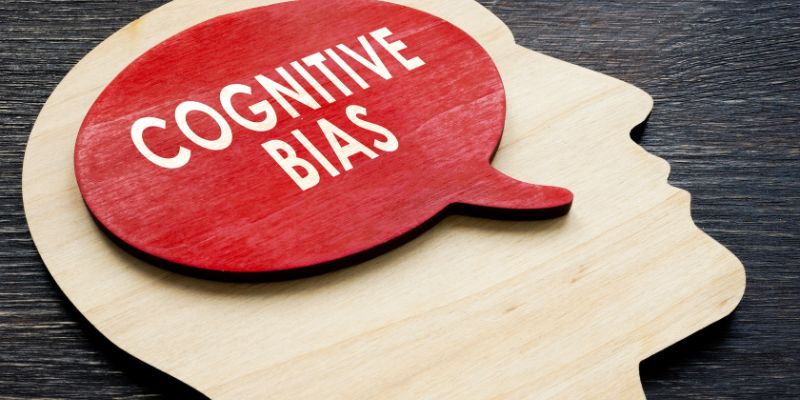Have you ever wondered if it gets stuck in your mind when you see or hear a certain thing for the first time and find it attractive or likable? After a while, you will start seeing or hearing it wherever you go. You feel déjà vu about it; it's not nostalgia or anything. It is described as a Frequency illusion.
Let's take an example to explain it further: you see a car you like in a particular color, and after a while, a car with the same color pop. Similarly, you heard a song thatch you liked but stuck in your mind; now you start hearing it in restaurants or on the radio, and it keeps going.
Frequency illusion is also referred to as Baader-Meinhof or blue car syndrome; Baader-Meinhof was a terrorist group in Germany known for spreading terror; a person who read about them in a newspaper or heard about their terror from other sources start seeing them more often than before, its get stuck somewhere in their minds, its nothing but an illusion.
The reason behind Frequency Illusion
Frequency illusion combines or interacts with two psychological biases, selective attention, and confirmation bias. Selective attention is noticing or keeping the things that are important to us currently (currently) and disregarding the rest.
Confirmation bias, on the other hand, explores or looks for the information that supports or strengthens our hypothesis and disregards all other information. It makes us think or pay attention to new information we see or hear and start looking for more examples.
You are probably tracking back events or incidents that happened. At some point, you also experience a frequency illusion. The question raised in your mind is why it happened and its reasons; let's explore and develop an understanding.
Frequency illusion happens to almost everyone at one point or another; the reason behind it is the amount of attention you give to a particular thing that makes it stand out. The same things start showing up randomly in your life.
For a better understanding, let's divide it into two parts. The first part is related to seeing and believing.
Seeing is believing
Seeing is believing; firstly, you start believing that a certain thing is starting to show up more often than normal, and in reaction to it, you convince your brain that this particular thing, word, or concept didn't happen as much as it does now, this is called confirmation bias. It implies that a frequency does not go up, but your brain or mind is more sensitive and convinced it has.
The concept of frequency illusion is similar to working memory-driven attention capture, which explains how your attention guides you whenever you capture or hold new information, idea, thing, or sound in your mind; your mind automatically starts inclining towards that particular thing without any notice.
Voluntary and Involuntary Attention
Frequency illusion revolves around voluntary and involuntary attention. Voluntary attention makes you focus on the information important to your current task. Whereas involuntary information is quite the opposite, it's about information or things that capture your attention and takes it away from your current task.
It's how our brain has evolved, by giving attention to important things, getting things done, and paying less attention or neglecting things that take them away. But as humans, we are curious creatures; certain things always grab our attention and leave an impression in our minds.
Effects of Frequency Illusion
The effects of frequency illusion vary from one person to another; for some people, it is an interesting phenomenon that doesn't have any major effects; on the other hand, for some people, it's a big deal, and they find it hard to recenter their attention or focus to a particular thing after experiencing frequency illusion.
Frequency illusion becomes more crucial in fields like medicine and criminology. In criminology, when an officer interrogates a suspect, their mind is more inclined to get new information which helps solve the case. Suppose the attention remains on just one person/single piece of information. In that case, there are higher chances that they may miss the evidence or couldn't get any leads.
Similarly, in the medical field, a doctor is constantly prone to new information and symptoms; if they don't equip themselves with new information, they may be unable to help or diagnose patients with certain conditions. In medical frequency, illusion helps doctors to access the right information and use it to diagnose patients.
In the case of psychological disorders, frequency illusion can make a person's condition worse in many scenarios, particularly in schizophrenia. It makes your confirmation bias confirm your suspicions and may also convince you that a certain delusion from schizophrenia exists and is real when it's not.
How to deal with Frequency Illusion
Frequency illusion is a form of cognitive bias; as a human, you can't ignore or refrain from getting new information, especially in current times. Still, you can know or get aware of the fact when it happens. One way to rectify it is by being mindful of your surroundings, events, or things. When a certain thing catches your attention, you must remind yourself that you saw it for the first time.
You don't have to reference the new information with your surroundings; when you start seeing things repeatedly, your counter will remind you that it's nothing wrong when you know or notice something for the first time.
Final Thoughts
Frequency illusion shows how much information your brain can take at any moment. Without you knowing how this information transforms, it creates a picture that is not real and just extra attention that your brain gives to that particular information. It also explains how focusing on certain things distracts you from other important things.






